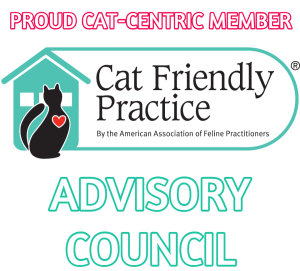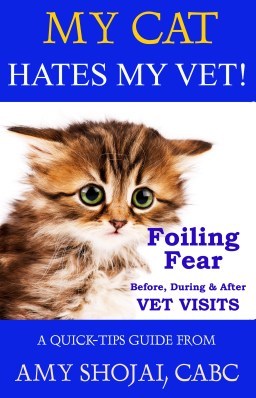Amy Shojai's Blog, page 76
February 20, 2017
Magical Milestones & When Normal Hurts
Magical Milestones & When Normal Hurts
SAVORING EACH MAGICAL DAY
My canine best friend, my buddy, my heart–Magical-Dawg–has been declining in recent weeks. No surprise there, since he will celebrate his 11th birthday in July. Because I work at home, it is my joy to spend nearly 24 hours a day with my baby-dawg, and his furry “siblings.” I get to make pets the focus of my life’s work.
That’s a blessing, but also a curse. After working as a vet tech and a certified animal behavior consultant, and having picked the brains of the most savvy veterinarian experts in the world, I know what the future holds for Magic.
No, I’m not a veterinarian, and I don’t have a crystal ball. But with each canine gray hair earned, and every missed doggy step-and-stumble, I see.
I worry.
And I mourn what will be.

He’s a senior German Shepherd. So what’s happening to him could be…this.
Or it might be …the other thing.
But please doG, don’t let it be…that.
MAGIC’S DECLINE…IS IT NORMAL?
Magic’s athletic prowess has amazed me from the beginning. He tackles life (and toys!) head on, and used to bang himself up by tearing dew claws or slicing paws during play. Our first dog (the one who launched my pet-writing life) didn’t know how to play, suffered horrendous allergies, and had hip dysplasia. So to have a robust, play-tastic over-the-top healthy German Shepherd has worn us out while offering plenty of laughs along the way.
For instance, balls and toys and especially Frisbees offer nonstop fetching delight. He’s been known to stack and retrieve as many as he can carry (10+ I think!). Here’s a video example from 2010:
MY SENSITVE BOY
GSDs are known for their sensitivity. Magic tunes in on his family’s stress. I know I need a vacation from “life” when my baby-dawg insists on more petting/play time, and interrupts me until I pay attention. When I had to travel quite a bit, Magic began stress-licking his paws and developed acral lick granuloma sores. We’ve fought them ever since. You can read more about them (with an update) here.
The past couple of years have been incredibly stressful. I’ve had some work challenges, as has my husband. That’s one reason that I’m making several changes this year in my professional life–more about that in a future post–and Magic and the other fur-kids really helped us through.
Now it’s our turn to help Magic.
Our first dog lived to be 13 years 4 months, and passed away on Halloween night–he waited until my husband got home, and we were all together. Thirteen years were not enough.
Magic still has time to share with us. For I wish it to be so… I have to hang on to that. So today, we went to the veterinarian for Magic’s annual check up. There’s a special kind of hell when the vet listens to your concerns and says,
“We’re going to hope it’s just arthritis.”

Magic waits for his fav vet-buddy to come pet him.
WHEN “NORMAL” HURTS
Dogs can’t tell us when they’re in pain, or how much discomfort they feel. Oh, they can yelp when hurt, or snarl and warn away your touch with a growl. Many pets (cats especially) are stoic and do their best to hide discomfort. I think Magic may have hidden his pain for a long time, perhaps from stubbornness and determination to keep on keepin’ on. Or perhaps, living so closely with him, we too easily overlooked the small signals until only the obvious problems shouted loud enough for us to notice.
Magic loves car rides. He thinks it’s his car, and gets treats at Starbucks (a “puppy-whip” cream cup) and crunchies at the bank drive through. He used to bully his way into the front seat to drive, before we installed the barrier bars. But these days, he needs a running start to vault into the back seat. Could it be…arthritis? That’s a normal part of aging, right?
Frisbee-Fetch no longer goes on forever, and is limited to three or four tosses kept low to the ground so he’s not tempted to leap since I’m sure he does have arthritis. Because he’ll still try–and pay for the failure with a painful cry and hurt feelings. Maybe that’s why Magic no longer remembers the bring command. He simply stands over the Frisbees and wags, waiting for us to come to him, rather than prance and dance them back to us for another throw.
Magic has eaten a special food that also has made a marked change in his brain acuity. I wrote about that here. But now he forgets (or ignores) requests/commands he’s known forever. Even the treat-word doesn’t get the same response. And this past weekend, he began to howl, for no apparent reason. He’s suffered an appetite loss the past several days, and has been incredibly restless at night. He doesn’t want to play with his best friend Karma-Kat. Could it be…aging brain changes or *shudder* canine cognitive issues?
One of my Mom’s shelties had such severe hip dysplasia by five months of age that he “bunny hopped” when he ran. My first shepherd had hip dysplasia, too, and never jumped. Magic jumped so high in his youth, he’d nearly levitate. But last week, Magical-Dawg adopted the bunny-hop gait when running. More alarming, though, he’s also noticeably weak on his left rear flank, and can no longer “pose” to leg-lift. That leg and foot toes inward when he walks, and he frequently loses his balance. Could it be . . . dysplasia? Or something worse?
MAGIC’S CHECK UP
Last year, Magic got a senior blood panel screening to establish a baseline, so we repeated that. He also received a heartworm check, fecal exam, and vaccines for lepto, distemper and kennel cough (the others he received last year). I waited, trying my best to be hopeful, while the tests were run and Magic was examined for neurological signs. *gulp*
You see, old German Shepherds can suffer from a progressive disease called degenerative myelopathy (DM), for which there is no treatment. It’s thought to be an autoimmune disorder in which the immune system attacks the spinal cord, resulting in progressive paralysis. DM is not painful, but affected dogs eventually stop walking as the paralysis ascends from their flanks upward.
There is a holistic modality developed by Dr. Roger Clemmons, a neurosurgeon at the University of Florida, that seems to help some dogs. A combination of herbs, amino acids and antioxidants appear to help reduce the inflammation and protect the nerves to help slow the progress of the disease. You can ask your veterinarian about the protocol, and share this information. Most dogs succumb within a year of diagnosis, however.
Did I mention I’ve not slept well lately? I held my breath when Dr. Clay came back into the room.

In the drive-thru at Starbucks to celebrate the good news exam!
WHEN THE VETERINARIAN SMILES…
Good news! Positioning Magic’s rear paws toe-under prompted him to immediately correct. The veterinarian said most dogs with DM don’t correct. In fact, the claws on the rear feet of DM-afflicted dogs often become rounded with wear from dragging. Magic’s claws had no tell-tale rounding.
Magic’s blood panel came back great, too. All values were pronounced not just good, but VERY good. That means he’s a good candidate for a canine arthritis drug, Rimadyl.
I’m breathing again.
And I didn’t cry (not very much anyway). Magic was given a prescription of Carprofen, the generic form of Rimadyl, to use as needed, beginning with twice daily. I was told not to get my hopes up (TOO LATE!) but that the meds can make a dramatic difference.
After all, pain muddles brain acuity–how well do you think when you hurt? And how do you play when you hurt? And how do you eat when you hurt? I bet you’d howl if you hurt.
But through the hurt, you still love. Magic always loves.
The meds WILL make a dramatic difference. For I wish it to be so.
My canine best friend, my buddy, my furry muse–Magical-Dawg–hasn’t finished with us yet. He still has work to do, races to win, more thrillers to inspire with his antics, games of kitty-tag to play with Karma. And keeping me sane.
No time for mourning. We’ve got Frisbees to chase!
I love hearing from you, so please share comments and questions. Do you have an ASK AMY question you’d like answered? Do you have a new kitten and need answers? Stay up to date on all the latest just subscribe the blog, “like” me on Facebook, and sign up for Pet Peeves newsletter. Stay up to date with the latest book give aways and appearances related to my September Day pet-centric THRILLERS WITH BITE
AMY SHOJAI'S Bling, Bitches & Blood - Practical Solutions for Pets Problems & Publishing
Covering Thrillers & Hide And Seek Give-Away + 50 Books
Covering Thrillers & Hide And Seek Give-Away + 50 Books
Many of my Facebook peeps have already seen this, and you may also have noticed a few changes on the fiction book slideshow. I’ve updated the covers of my thrillers, YEE-HAW! And today, I’m announcing a contemporary thriller book giveaway.
WHY CHANGE BOOK COVERS?
Why, you ask? Well, the other bit of news is that the books have been released under my own FURRY MUSE PUBLICATIONS imprint. Yes, I have my own publishing company, woot! And while I loved the previous covers, they didn’t “say enough” about the human-dog connection portrayed in these stories. I hope that the new versions help clarify for potential readers.
I’ll soon share more about how FURRY MUSE PUBLICATIONS came about. I’m making some major changes in 2017–it’s been a rough couple of years–and time to REINVENT AMY once again.
CONTEST GIVE AWAY!
In celebration of the new covers, I’m joining a celebration of book-give-away-icity. (Hey, I’m a writer, so I get to make up words!). There are more than 50 thriller authors in this gala, including Brad Parks, Catherine Coulter, J.T. Ellison and more (SQUEEE! fan-girl moment…).
The contest runs today (Feb. 20) for a week (Feb. 27). If you haven’t yet “adopted” one of my thrillers, now’s your chance–plus the possibility of winning a Kindle Fire.
Oh, and for those who have read this far, stay tuned for some info later today about my Magical-Dawg…the inspiration for my Shadow-pup character in my series. Magic will soon be 11 year’s young, and he’s got a vet appointment this morning. Please send some paws-itive energy for a good check-up.
And now….click the picture, below, to enter. Ready, set….CLICK!
Subscribe to Amy’s YouTube Channel
I love hearing from you, so please share comments and questions. Do you have an ASK AMY question you’d like answered? Do you have a new kitten and need answers? Stay up to date on all the latest just subscribe the blog, “like” me on Facebook, and sign up for Pet Peeves newsletter. Stay up to date with the latest book give aways and appearances related to my September Day pet-centric THRILLERS WITH BITE
AMY SHOJAI'S Bling, Bitches & Blood - Practical Solutions for Pets Problems & Publishing
February 14, 2017
February 13, 2017
Valentines Pet Dangers: TOP 5 Pet Safety Tips for Valentines Day
Valentines Pet Dangers: TOP 5 Pet Safety Tips for Valentines Day
I’m often interviewed by media about various cat behavior and dog training issues, and of course Valentines pet dangers top the list this week. Pet hazards are common when our normal routine goes out the window, so pet parents are vigilant around the holidays. Pet safety issues for Christmas are similar to those for Valentine’s Day but it’s always good to refresh our watch list.
5 VALENTINES DANGERS DANGERS & WHAT TO DO

“Got a hole in your heart? Pets fill it up with furry love!”
CHOCOLATE DANGERS
The top danger at Valentine’s for dogs is chocolate–in particular the dark chocolate and truffles-type candy. Chocolate contains theobromine and caffeine, and both can speed up the heart rate and in high enough concentrations, cause vomiting, diarrhea or even death. It takes about two pounds of milk chocolate to poison a 7 pound pet.
Baker’s chocolate has 10 times as much theobromine, so that 7 pound pet could get sick from eating only 2 ounces. Dark chocolate has a higher concentration, so is the more dangerous. Dogs are poisoned more often (cats don’t have a sweet tooth like dogs and people!), and if you see a dog lick the frosting off the cake or break into the Valentine’s truffles, induce vomiting immediately and then get vet care.
The best way to make dogs vomit is to first feed a small meal (that dilutes the poison and also makes it easier to induce vomiting). Then give 3% hydrogen peroxide (about 1-2 teaspoons/10 pounds of pet) to make him vomit. Use a turkey baster or squirt gun if you don’t have a syringe applicator. You’ll find more tips on how to make pets vomit at this post.

Make your pet love shine 365 days a year…not just at Valentine’s Day.
RIBBONS & STRING
The top danger for cats is swallowed ribbon/string type decorations associated with Valentine’s gifts. Oh, the packaging looks glorious and it may delight your playful cat just as much as it does you.
Cats play with any moving object, and while supervised play is fine, when swallowed, the string item can cut internal organs and/or create a blockage. Once the cat starts swallowing, she can’t stop…to make the tickle go away, she keeps gulping until it’s all inside. It may take a day or so before you even notice a problem, when the ribbon or string clog up the “plumbing.”
Again, if you see the cat swallow the string, immediately induce vomiting (same as with dogs). However, cats are harder to get to vomit, so after one dose, get the kitty vet help. Also…if you see string/ribbon hanging outside the mouth OR the anus, DO NOT PULL! The other end of the string may be caught on the inside, so tugging could cut the organs. Often, when cats swallow thread, a needle may be on one end, and the thread may wrap around the base of the cat’s tongue. The movement of the intestines (peristalsis, sort of like an inch worm) can make the tissue gather like fabric on the thread. A vet visit is vital. And of course, to prevent, just supervise ribbon play and dispose of dangerous items.

“You’re sweeter than Valentine’s chocolate!”
TOXIC PLANTS & PETS
Also be VERY careful of the types of Valentine’s flowers and plants are within paw-reach. In particular, lily can kill dogs and especially cats, causing kidney failure. Cats don’t even have to eat them–just drink from water in the container, or claw the plant and lick claws clean. Check out this PAW-some page with a list of 199 poisonous plants and what to do.

Bags are great fun–but cut off the handles for cats!
BAGS, BOXES & PACKAGING
Cats love bags, right? And some cats adore licking plastic, which can be a BIG concern. Oftentimes, the plastic is a petroleum product derivative of some kind, and maybe that’s why cats like the flavor. Ingestion is a problem with both dogs and cats, so be sure to properly dispose of dangerous packing materials.
While bags (not plastic!) can be great fun for cats, be very careful of those bags with handles. A hiding cat that darts out of the bag can get the handle caught around his neck. That’s a potential choking hazard at worst, and also creates terror when the cat runs and the bag “chases” the kitty. That happened one time with Seren-Kitty when she was a kitten (20 years ago!) and was an early lesson for me. Now I throw out plastics, and cut the handles on any bags so they’re safe for kitty hide aways.
STRANGER DANGER
[image error]  Another issue around Valentine’s Day for both cats and dogs is something I call ‘STRANGER DANGER.’ When a pet isn’t familiar with the new guy or gal you’re dating, that can put the pet’s tail in a twist. For some pets, that simply means they hide. Others, though, can become fearful and turn aggressive toward the new person. And the fear may actually prompt the pet to try and escape–and getting out of the house can mean a lost pet or hit by car or any number of things. The best prevention of course is to slowly introduce pets to strangers to ensure there’s a future love connection. And if you haven’t had time to do the intros, simply confine your dog or cat in a safe room away from the stranger. Click the book covers for my tips guides on the issue.
Another issue around Valentine’s Day for both cats and dogs is something I call ‘STRANGER DANGER.’ When a pet isn’t familiar with the new guy or gal you’re dating, that can put the pet’s tail in a twist. For some pets, that simply means they hide. Others, though, can become fearful and turn aggressive toward the new person. And the fear may actually prompt the pet to try and escape–and getting out of the house can mean a lost pet or hit by car or any number of things. The best prevention of course is to slowly introduce pets to strangers to ensure there’s a future love connection. And if you haven’t had time to do the intros, simply confine your dog or cat in a safe room away from the stranger. Click the book covers for my tips guides on the issue.
What about you? Have you “pet proofed” your Valentine’s Day plans? Do tell!
Subscribe to Amy’s YouTube Channel
I love hearing from you, so please share comments and questions. Do you have an ASK AMY question you’d like answered? Do you have a new kitten and need answers? Stay up to date on all the latest just subscribe the blog, “like” me on Facebook, and sign up for Pet Peeves newsletter. Stay up to date with the latest book give aways and appearances related to my September Day pet-centric THRILLERS WITH BITE
AMY SHOJAI'S Bling, Bitches & Blood - Practical Solutions for Pets Problems & Publishing
February 3, 2017
Valentine’s for Texas Pet Lovers: Paw-tographs for Dog & Cat Peeps
Valentine’s for Texas Pet Lovers: Paw-tographs for Dog & Cat Peeps
Join me and my colleague DUSTY RAINBOLT for a pet book paw-tograph extravaganza!

BOOK SIGNING FOR PET LOVERS
Shopping ops for anyone who loves pets–at the GRAND OPENING of the new Pet Supermarket in Plano, Texas! Dusty and I will be happy to answer pet questions and/or publishing and writing topics, too.
Doesn’t the pet lover in your life want a paw-tograph a book, signed to THEIR furry friend? Or maybe you want one inscribed to the special cat or dog in your life.
Pet Supermarket is at 13420 Preston Road, in Plano, Texas. Call for more information at 469-453-0180.
I love hearing from you, so please share comments and questions. Do you have an ASK AMY question you’d like answered? Do you have a new kitten and need answers? Stay up to date on all the latest just subscribe the blog, “like” me on Facebook, and sign up for Pet Peeves newsletter. Stay up to date with the latest book give aways and appearances related to my September Day pet-centric THRILLERS WITH BITE!
AMY SHOJAI'S Bling, Bitches & Blood - Practical Solutions for Pets Problems & Publishing
February 1, 2017
Happy Birthday Seren! Happy Gotcha Day Karma!
Happy Birthday Seren! Happy Gotcha Day Karma!
A pets adoption day is a special event. Today is Seren’s 21st birthday–mee-WOW!

Photo courtesy of DepositPhotos.com
HAPPY BIRTHDAY SEREN!
When a kitten was discovered asleep in a flower pot on a friend’s back porch about the first week of June, my friend called me for help. You see, her four-year-old daughter REALLY wanted this kitten, but my friend was allergic yet didn’t want to take the baby to the shelter. So it was Amy-To-The-Rescue.
As soon as I walked into her kitchen, this tiny baby with blue-jean-color eyes raced across the floor and climbed up my pant leg, put her paws around my neck, and it was all over. I was smitten. I wrote about this in Chicken Soup for the Cat Lover’s Soul. The veterinarian judged her to be about five months old, so we counted backwards to give Seren a February 1st birthday–which also happens to be my Mom’s birthday.
 So today, in honor of that Seren-Kitty’s 21st birthday, I’m delighted to announce the updated edition of my award-winning COMPLETE KITTEN CARE which is now available FREE if you have Kindle Unlimited. For those who prefer physical books, the print edition is here.
So today, in honor of that Seren-Kitty’s 21st birthday, I’m delighted to announce the updated edition of my award-winning COMPLETE KITTEN CARE which is now available FREE if you have Kindle Unlimited. For those who prefer physical books, the print edition is here.
My still-teeny Siamese wannabe will get as much lap-time and treats as she wants, including protection from the pester-cat, Karma. Oh, and yes, Karma-Kat’s picture is also in the updated book.
 KARMA’S GOTCHA DAY
KARMA’S GOTCHA DAYFour years ago, the day before Seren’s 17th birthday, we prepped for a horrible ice and snow storm set to shut down North Texas for several days. On Friday January 31st, Magical-Dawg saw “something” dash across the back patio. A hungry, not-so-tiny kitten with blue-jean-color eyes came to the window and paw-clawed to get inside, never mind that a big black doggy face stared back at him.
He wore a collar, too, so I thought he must belong to the new neighbor. When I opened the door, he ran–I followed, and called for him. He kept running until I meowed at him. He stopped, mewed back, and then can running back to me. And a week later I blogged about him when knew that Karma was home for good.
The veterinarian guestimated Karma to be about 7-8 months old, so we counted backwards and–holy cats!–assigned his birthday in July on the same day as Magical-Dawg’s birthday.

Image courtesy of DepositPhotos.com
WHAT’S YOUR PET’S BEST GIFT EVER?
So what do YOU think? Is there some really kewl karma and serendipity and magic happening here? For Karma to arrive so timely for Seren’s 17th birthday when, frankly, my old lady cat had been so ill that I feared her days were numbered. I know Seren would argue that SHE never asked for a kitten for her birthday, but Karma certainly turned back the clock and gave her new energy when he arrived.
However, having Karma around means Magic no longer pesters Seren the way he used to. Magic would waggingly welcome the idea of sharing a birthday with his best cat buddy, Karma. He’d been trying to make friends with Seren for seven years to no avail–and suddenly discovered the joys of a kitty playmate that LIKES him.
Have you ever had new furry wonders arrive at JUST the right time in some weird-and-wonderful coincidence? What’s the best birthday or gotcha-day gifts your fur-kids ever got? Do tell!
In the play STRAYS, THE MUSICAL we included a very short, funny but poignant scene called INAPPROPRIATE PET GIFTS, in which a puppy asks an older dog about the best and worst gifts he ever received. Worst gifts include a hotdog costume for Halloween, and the puppy’s best gift was an old shoe that smelled like the owner–“Heaven!”
“What’s the best gift you ever got?” asks Puppy.
Old Dog answers with two words. “A home.”
I love hearing from you, so please share comments and questions. Do you have an ASK AMY question you’d like answered? Do you have a new kitten and need answers? Stay up to date on all the latest just subscribe the blog, “like” me on Facebook, and sign up for Pet Peeves newsletter. Stay up to date with the latest book give aways and appearances related to my September Day pet-centric THRILLERS WITH BITE!
AMY SHOJAI'S Bling, Bitches & Blood - Practical Solutions for Pets Problems & Publishing
January 27, 2017
Fat Cat? Fight Kitty Obesity with 8 Ways to Slim A Cat
Fat Cat? Fight Kitty Obesity with 8 Ways to Slim A Cat
Is your cat fluffy or fat? Kitty obesity is defined as exceeding ideal body weight by 20 percent, and today about forty percent of cats are considered overweight. Fat cats tend to carry a “pouch” of fat low in the tummy, but seem of average size otherwise. If you can’t feel the pet’s ribs, and/or she has a pendulous or bulging tummy, your pet is too plump.
I’ve been head-down busy working on the next book projects (shhh, news to come!) and haven’t posted in a while. But today, I released the next installment in my CAT FACTS, The Series, which covers feline obesity. So I hope today’s post is a help to you and your feline friends.
CAT FACTS, THE SERIES
You’ll find more detailed information about feline obesity in Cat Facts, The Series 15 (O): The Pet Parent’s A-to-Z Home Care Encyclopedia which includes these topics:
Obesity, Otitis, and Outdoor Shelter.
I’ve broken the massive book into discounted catnip-size alpha-chapter sections. Folks can choose which ones they most need. Each chapter will release every other week. Of course, you can still get the entire CAT FACTS book either in Kindle or 540+ pages of print.
Join Amazon Kindle Unlimited 30-Day Free Trial


Overweight cats that stop eating are at higher risk for fatty liver disease.
I’m fortunate that Seren-kitty has always been petite, a good eater but not overly pudgy. She doesn’t even have that tummy pouch. In her case, she’s always been very active and I think that’s one reason she remains so healthy even at nearly 21 years old.
Karma-Kat tends to put on the pudge, even though he’s very picky, compared to Seren. She’ll eat just about anything and never gains an ounce. Personally, my own metabolism is closer to Karma’s than to Seren. Drat!
If your tabby is tubby, why should you care? Obesity increases risk for diabetes, and is an aggravating factor in heart problems, arthritis, and skin problems.

Common Causes for Fat Felines
Spaying and neutering won’t make kitty fat, but does reduce metabolic rate—how fast and efficiently food is use—by 15 to 20 percent. So unless food intake and exercise are adjusted after surgery, cats can gain weight.
Middle aged and older cats also tend to gain weight. Part of that may be due to changes in aging senses. While feline appetite is stimulated by scent, veterinary experts say a partial reduction in smell sense prompts cat to eat more food.
Indoor-only cats exercise less since they don’t have to chase mice to survive. Couch-potato pets fed high-calorie tasty foods often overeat either out of boredom or from being over-treated by owners.
8 Ways to Slim A Cat
Your vet should rule out potential health complications beforehand. Kitty crash diets can prompt deadly liver problems, called hepatic lipidosis. It’s best to aim for losing only about 1 percent of kitty’s starting weight per week. Medical supervision or a special therapeutic weight-loss diet prescribed by the vet may be necessary for obese cats. But for moderately overweight kitties, these tips work well.
Curb Snacks. Eliminating or reducing treats easily cuts calories. Instead, reserve part of the kitty’s regular diet—a handful of kibble, for instance. Keep it handy to dispense as “treats” when Kitty pesters, or reward with attention, not treats. (Ooooooh I can hear the cats now yowling, “No fair!”
Meal Feed. Rather than keeping the bowl full for all day nibbling, switch to meal feeding measured amounts. Divide the daily food allotment into four or even five small meals keep her from feeling deprived. Multiple small meals increase the body’s metabolic rate, so she burns more calories faster. (Hey, this works for me, too, when I can manage to do it.)
Offer Diet Foods. Reducing diets typically replace fat in the food with indigestible fiber, dilute calories with water, or “puff up” the product with air. “Senior” diets typically have fewer calories, so switching older pets to an age-appropriate formula helps. “Lite” diets aren’t magical and only mean the food has less calories than the same brand’s “regular” food—it might have more calories than another company’s food. Some cats eat more of the diet food to make up for lost calories, so you still have to measure the meals. Be sure to check with your vet before deciding to make major nutrition changes, though.
Go For A Walk. Make twice-daily 20 minute exercise part of your routine. Cats won’t power walk, but a slow to moderate stroll at the end of the leash once or twice a day around the house or garden will help burn energy.
Schedule Play. Interactive play is the best way to encourage feline exercise. Feather toys or fishing-pole lures that the cat will chase are ideal. Some cats learn to play fetch if you toss tiny wads of paper across the room or down the stairs. Entice your cat to chase the beam of a flashlight. Or toss kitty kibble for the cat to pounce and munch.
Create A Hunt. Put food at the top or bottom of the staircase, or on a cat tree so kitty has to get off her pudgy nether regions to eat. If she can’t manage stairs or leaps, put the bowl on a chair and provide a ramp up so he’s burning a few calories. Setting the bowl across the house from Fluffy’s bed also forces her to move.
Puzzle The Cat. Commercial treat balls and interactive feeders are great options. Place one or two meal portions inside kitty puzzles so he must work to get the food. This can solve portion control, exercise, and the pester factor all in one.
Automatic Feeders. When you must be gone during the day, consider using an automatic feeder. Some have refrigerated units to offer fresh canned food servings from locked compartments at timed intervals
 How do you handle your pudgy kitty? Does he or she eat a special diet, or do you try to increase exercise in some way? What tricks work for your clowder, please share! Obesity impacts more than looks. It’s also a longevity issue. Overweight cats have an increased risk for dying in middle age. A slim cat enjoys all nine of her lives.
How do you handle your pudgy kitty? Does he or she eat a special diet, or do you try to increase exercise in some way? What tricks work for your clowder, please share! Obesity impacts more than looks. It’s also a longevity issue. Overweight cats have an increased risk for dying in middle age. A slim cat enjoys all nine of her lives.
I love hearing from you, so please share comments and questions. Note: Upon occasion, affiliate links to books or other products may be included in posts, from which I earn a small amount with each purchase from the blog. Do you have an ASK AMY question you’d like answered? Stay up to date on all the latest just subscribe the blog, “like” me on Facebook, and sign up for Pet Peeves newsletter. Stay up to date with the latest book give aways and appearances related to my September Day pet-centric THRILLERS WITH BITE!
AMY SHOJAI'S Bling, Bitches & Blood - Practical Solutions for Pets Problems & Publishing
January 16, 2017
CatFriendly.com Launches: A Veterinary Resource from AAFP
CatFriendly.com Launches: A Veterinary Resource from AAFP
Go ahead and admit it–if you love reading and talking about cats, sharing cat stories, and (especially) providing good cat care for your special felines, the new CatFriendly.com website is right up your alley(cat). Sorry…couldn’t resist.

 Last year, I was honored to be asked to serve on the Cat Friendly Practice Advisory Council. This is an outreach effort of the American Association of Feline Practitioners (AAFP) to connect with cat caregivers and provide good information for keeping your cats happy and healthy.
Last year, I was honored to be asked to serve on the Cat Friendly Practice Advisory Council. This is an outreach effort of the American Association of Feline Practitioners (AAFP) to connect with cat caregivers and provide good information for keeping your cats happy and healthy.
In their continued effort, last week AAFP announced the launch of a new “cat friendly” Internet destination, with content written by feline veterinarians. Mee-WOW! Believe me, if your cats could read, that’s where they’d hang out. And since they can’t read (and you have control of the mouse *s*) I urge you to take an eye-blink look at CatFriendly.com. The site includes a searchable database for you to “Find a Veterinarian or Practice” to help you locate an AAFP member veterinarian or Cat Friendly Practice® in your neck of the woods.
JUST ANOTHER CAT WEBSITE?
Now, y’all know I provide lots of cat care (and dog care) and behavior information here on the Bling, Bitches & Blood blog, as well as in my books. And I know a boatload of wonderful “cat journalists” members of the Cat Writers’ Association who research and  provide accurate cat information and advice in a variety of ways. That info ONLY works when you also partner with a veterinarian.
provide accurate cat information and advice in a variety of ways. That info ONLY works when you also partner with a veterinarian.
But too many cat caretakers avoid going to the vet at all because of the angst involved. I even wrote a short booklet about the issue, with some tips how to overcome the kitty angst (and your own!). So I’m already preaching the Cat Friendly message.
When looking for solid, credentialed information, it’s always important to know your source. You can never have too much GOOD information to get you started, and having a website designed, vetted and written by feline specialists takes all the guess work out of the equation. So I’m delighted to now have yet another resource to share. Trust me, your cat will LOVE you for this!
 WHAT YOU’LL FIND AT CatFriendly.com
WHAT YOU’LL FIND AT CatFriendly.comAAFP recognizes that folks often begin looking for answers to their cat questions by asking “Dr. Google.” That’s why they’ve created CatFriendly.com to provide veterinary-approved, credible information–while still encouraging you to seek veterinary advice and care. Here are some of the information topics the site covers:
Cat Care at Home
Keep Your Cat Healthy
Diseases
Why Does My Cat….?
Be a Cat Friendly Caregiver
The Toy Box (offers the opportunity to share photos, take quizzes, and other fun stuff!)
Today, we have many more options to find solid information, and provide the best care possible for our kitty friends. Applause and purrs to the AAFP and the Cat Friend Practice initiative–and the new resource website for us all. Please share this great information far and wide!
I love hearing from you, so please share comments and questions. Note: Upon occasion, affiliate links to books or other products may be included in posts, from which I earn a small amount with each purchase from the blog. Do you have an ASK AMY question you’d like answered? Stay up to date on all the latest just subscribe the blog, “like” me on Facebook, and sign up for Pet Peeves newsletter. Stay up to date with the latest book give aways and appearances related to my September Day pet-centric THRILLERS WITH BITE!
AMY SHOJAI'S Bling, Bitches & Blood - Practical Solutions for Pets Problems & Publishing
January 4, 2017
Cold Weather Pet Protection
Cold weather pet protection becomes more important this time of year. Here in North Texas we don’t have snow–yet–but just that wind chill can make it uncomfortable for our dogs and cats. It can also be downright dangerous, especially for pets that spend any amount of time outside, like feral cats or stray dogs. House pets used to warm indoor temps need extra help, too.

Different size dogs and variations in coats impact how quickly they’ll be ready for cold weather.Image Copr. Amy Shojai, CABC
PREPARE PETS FOR COLD WEATHER
Here in Texas, the weather stays HOT HOT HOT well into November and December. Now it’s the first week of January, and it’s starting to cool down a smidge. For cats and dogs that will spend a lot of time outside during the cold winter months, it’s important to get ’em ready now.
It takes time for that winter coat to grow. And it’s not fair to the dog to expect him to “get hairy” overnight when the first frost freezes. The video below, from a past KXII-TV pet talk, still has good information with suggestions and cautions for prepping pets for the colder weather to come.

The Chow has lots of thick fur for cold weather protection. Thinly coated pooches like the Chihuahua may need a coat. Image Copr. Amy Shojai, CABC
How do you get your dogs ready? Magical-Dawg would stay out in the wind and wet if we’d let him, and doesn’t seem to have the smarts to come in out of the weather. (Don’t tell him I said that!) The cats, on the other paw, have a very good idea about how to stay comfy and already have the warmest spots staked out for snoozing in sunny puddles on the carpet. Or under the stained glass lampshades.
Feral cats need extra help. Many of the tips, below, work equally well for creating safe outdoor spots for your dogs, too.
KEEPING KITTY SAFE IN WINTER
I wrote about keeping outdoor cats safe on this blog, and received lots of comments here and on Facebook. That discussion had more to do with choosing whether or not to allow cats out. But what if you have strays that refuse to come inside, or a feral colony you care for? My colleague Louise Holton of Alley Cat Rescue shared some PAW-some tips with our Cat Writers Association group and gave me permission to also share it here. What are some other ways to help keep kitty safe? Many of these also apply to keeping outside dogs winterized and safe. Here’s Louise’s suggestions:
A feeding station will help to keep food and water dry and will help with freezing weather. Bedding should be straw or made of a synthetic fleece material such as that used to make horse saddle covers. Blankets, sheets and towels retain moisture and remain damp and should not be used during winter.
If you are unable to build a shelter, you can use any type of strong box or crate, or buy a dog “igloo” from your pet supply company. The styrofoam ice chests work great for cat shelters, with thick walls that provide some insulation.
Mylar insulation is made of polyester and aluminum that reflects radiant heat. It is used to keep houses cooler in summer and warmer in winter. This type of insulation is normally used in attics and is a perfect material to use to insulate outdoor cat shelters.
TIPS FOR WINTERIZING YOUR COLONY
You should insulate the shelter with thick plastic or other material such as Mylar mentioned above to keep out wind and cold.
You could buy a dog house and modify it, blocking off part of the larger opening to make it smaller and therefore warmer inside for the cats.
Size should be approximately 3’ x 3 ’ and 2′ high.
Cats will cuddle together inside for warmth.
Build enough shelters so that around 6 cats can stay in each one.
Use straw for the bedding NOT HAY or blankets or towels.
It is safer to have 2 small openings for the cats to enter and be able to get away if danger presents itself. Put the openings on the side of the shelter that is protected from the wind. Two openings will give a chance at escape should a pesky raccoon for instance or any other animal try to enter the shelter.
Raise the shelter off the ground by placing it securely on bricks or on a wooden pallet. If left on the ground it will retain moisture and will rot.
Clean shelters each spring and autumn by replacing the bedding with fresh straw.
Be sure and visit Louise’s Alley Cat Rescue to find more feral cat resources and info.
COOL WEATHER PREPARATION FOR PETS
I love hearing from you, so please share comments and questions. Note: Upon occasion, affiliate links to books or other products may be included in posts, from which I earn a small amount with each purchase from the blog. Do you have an ASK AMY question you’d like answered? Stay up to date on all the latest just subscribe the blog, “like” me on Facebook, and sign up for Pet Peeves newsletter. Stay up to date with the latest book give aways and appearances related to my September Day pet-centric THRILLERS WITH BITE!
AMY SHOJAI'S Bling, Bitches & Blood - Practical Solutions for Pets Problems & Publishing
December 30, 2016
Pet Music Therapy? The Sound of Success!
Pet Music Therapy? The Sound of Success!
Pet music therapy can help solve cat behavior problems as well as offer physical therapeutic benefits. Our pet cats are attuned to sound and are incredibly sensitive to noises, including music.
With New Years celebrations this weekend, some pets with noise phobia issues are in for a rough ride (tips here for helping with fireworks fear!). Pet music therapy can also help, so read on.

Seren appreciates string music from my cello or violin.
CAT FACTS, THE SERIES
I’m sharing this information from my PET MUSIC THERAPY entry from Cat Facts, The Series 13 (M): The Pet Parent’s A-to-Z Home Care Encyclopedia which includes these topics:
Mammary Glands, Mange, Marking, Massage, Mastitis, Mega Colon, Miliary Dermatitis, Milk (as Food), and Music Therapy.
I’ve broken the massive book into discounted catnip-size alpha-chapter sections. Folks can choose which ones they most need. Each chapter will release every other week. Of course, you can still get the entire CAT FACTS book either in Kindle or 540+ pages of print.
Join Amazon Kindle Unlimited 30-Day Free Trial

WHAT IS PET MUSIC THERAPY?
Pleasant music can mask scary noises like thunder, or upsetting sounds like a trespassing cat’s vocalizations that put your pet’s tail in a twist. But more than that, the cadence of certain sounds influences the body’s natural rhythms and can speed them up and energize the listener, or slow them down to calm him.
For instance, a fearful cat can be soothed with music or distracted with nature sounds like water running from a fountain. Lethargic pets that need to exercise can be energized with chirping bird sounds or fast music to get up and boogie to the beat.

Many dogs enjoy music, and “howl along” with singing or the keyboard.
WHY PET MUSIC WORKS
Sound causes physical changes in the body. Brain waves change with different kinds of sounds—music with a pulse of about 60 beats per minute slows the brain waves so the listener feels more relaxed and peaceful and shifts the consciousness into a more alert state. This rhythm also slows breathing, which calms the mind and improves the metabolism. It works for humans, and also for our pets.
Even the heart wants to follow the pulse of the music—faster rhythms energize the listener as his heartbeat increases and blood pressure rises, while slower tempos calm. Listening to music releases endorphins—natural painkillers that are produced by the brain—and reduces the levels of “stress hormones” in the blood.

MUSIC IS SOUND MEDICINE
Sound therapy is still considered pretty new. One of the best known applications is ultrasound that uses the “echo” of high frequency sound waves to take diagnostic pictures inside the body—doctors even use it to break up kidney stones with vibration instead of surgery. Over the last 20 years, music therapy has become a staple of the human mental health profession, and is often used with troubled children and brain-disordered patients.
Today, harp music is used to relieve pain that drugs don’t help, soothes emotional upset, and has become of particular help in hospice situations for human patients. The sound of harp music calms fractious cats and offers almost a natural sedative effect so that the upset animals become quiet, and go to sleep.
HOW TO USE PET MUSIC THERAPY
The simplest way to treat cats with music is to put on a CD or turn on the radio. Choose music you like—pets seem to respond best to music their owners enjoy because of the bond you share. If you have favorite music you often play, your pet will associate the sound with your presence, so playing that same music when he’s alone will remind him of you and help ease problems like separation anxiety. Play the music for at least 10 to 15 minutes at a time to get your pet in the right mood.
LOUD, SOFT, CLASSICAL OR ROCK?
 Soft music with a slow, steady rhythm helps calm agitated pets. It can help arthritic cats relax their muscles and increase their range of motion. Many pets enjoy Mozart or other classical music. New Age, soft jazz, nature sounds or even ballad-type Country can be soothing. The music should be melodic (not dissonant) and the tempo even and slow. You can play calming music anytime your pet feels stressed, or all day long as a background to help keep him calm.
Soft music with a slow, steady rhythm helps calm agitated pets. It can help arthritic cats relax their muscles and increase their range of motion. Many pets enjoy Mozart or other classical music. New Age, soft jazz, nature sounds or even ballad-type Country can be soothing. The music should be melodic (not dissonant) and the tempo even and slow. You can play calming music anytime your pet feels stressed, or all day long as a background to help keep him calm.
Turn up the volume to energize your pet. Moderate to loud music with a more driving beat energizes the emotions and can encourage lethargic pets to exercise and lift depression or grief. Rock music, even the driving energy of Rap may get a pet’s tail moving, but any up-tempo music from classical to contemporary has the power to energize.
YOUR TURN!
Do your pets like music? Is it part of your doggy or cat protocol? What style of music do you (and your pets) prefer? Seren does her lion “cough-cough” when I hit a wrong note on the cello, and Magical-Dawg howls along when I sing too high. What about your furry wonders? Do tell!
I love hearing from you, so please share comments and questions. Note: Upon occasion, affiliate links to books or other products may be included in posts, from which I earn a small amount with each purchase from the blog. Do you have an ASK AMY question you’d like answered? Stay up to date on all the latest just subscribe the blog, “like” me on Facebook, and sign up for Pet Peeves newsletter. Stay up to date with the latest book give aways and appearances related to my September Day pet-centric THRILLERS WITH BITE!
AMY SHOJAI'S Bling, Bitches & Blood - Practical Solutions for Pets Problems & Publishing








